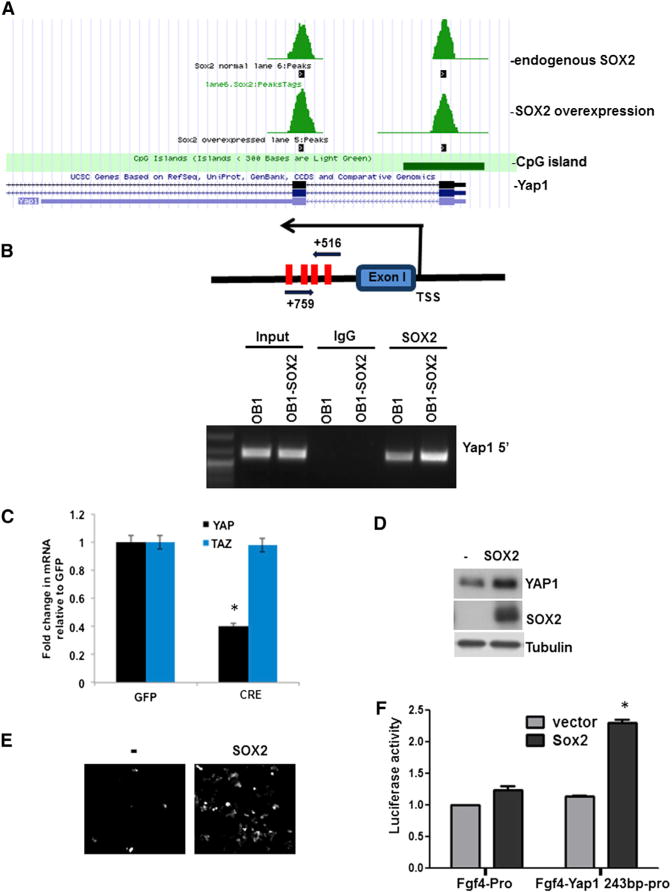Figure 1. YAP1 Is a Target of SOX2.

(A and B) SOX2 binds to the Yap1 genomic region in osteoprogenitor cells.
(A) SOX2 CHIP-seq shows two peaks of SOX2-bound genomic sequences around exons I and II of Yap1 in control and SOX2-overexpressing cells.
(B) CHiP-PCR with primers around exon I in SOX2-overexpressing (OB1-SOX2) or control OB1 cells. A schematic of primers and SOX2-binding sites (red bars) in the first peak is shown. TSS, transcription start site.
(C) YAP1 and TAZ mRNA expression analysis in SOX2-depleted osteoprogenitors. SOX2F/F cells were transduced with CRE- or GFP lentivirus, and YAP1 and TAZ expression was analyzed by qRT-PCR. Gene-expression values in CRE-infected cells are normalized to that of GFP-lentivirus-infected cells.
(D) YAP1 expression by western analysis in SOX2F/F osteoprogenitors infected with SOX2 lentivirus. See also Figure S1. (E and F) SOX2 induces expression of a Yap1 reporter.
(E) 293T cells were infected with SOX2 or control (−) lentivirus and transfected with a Yap1 243-bp-region-driven Venus fluorescent reporter.
(F) Activity of the Yap1-luciferase reporter. C3H10T1/2 cells were infected with lentiviral SOX2 or control vector and then transfected with Fgf4 minimal promoter reporter or Fgf4 minimal promoter containing the Yap1 243 bp region. Luciferase activity was normalized to Renilla.
*p < 0.05; error bars represent the average + SD.
